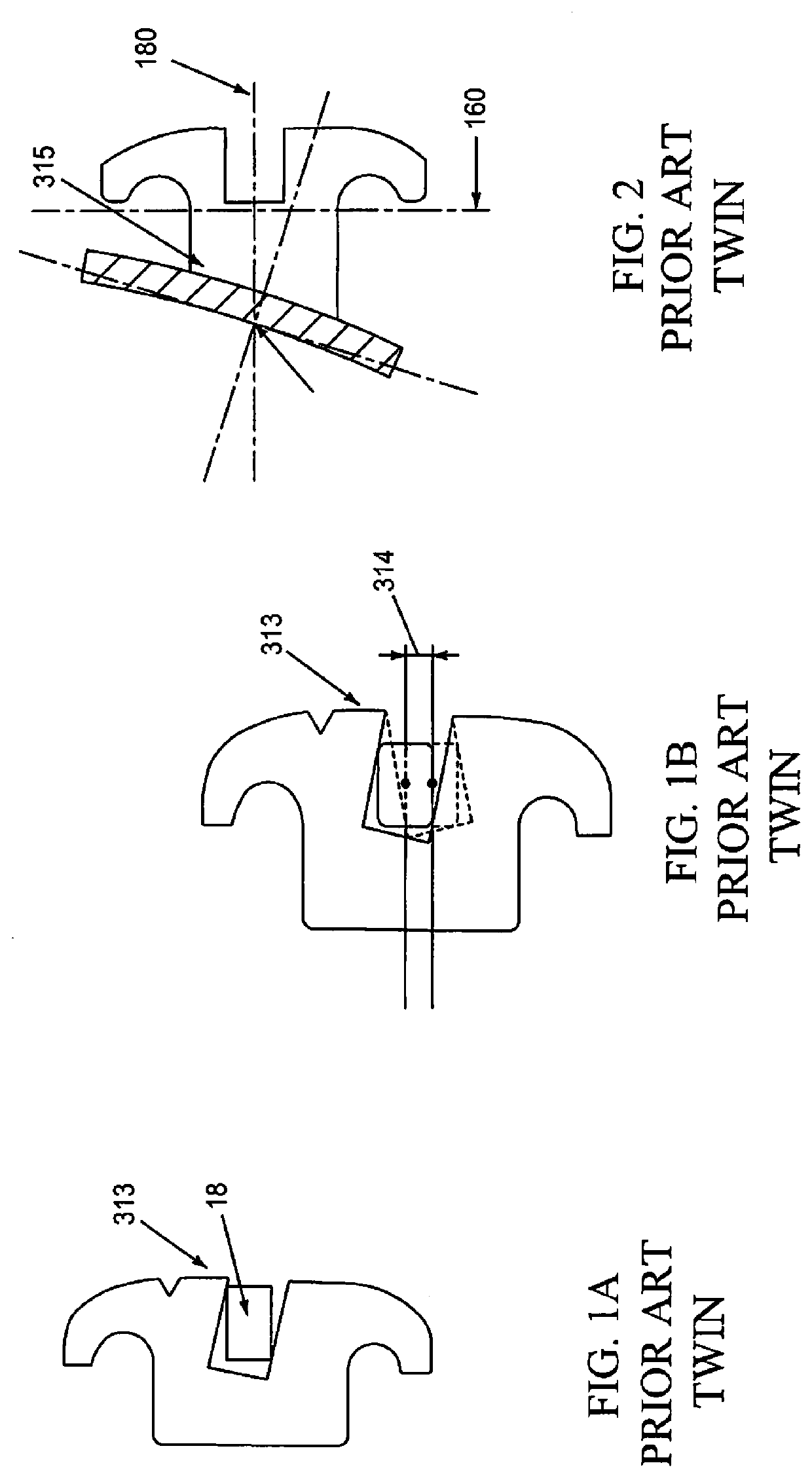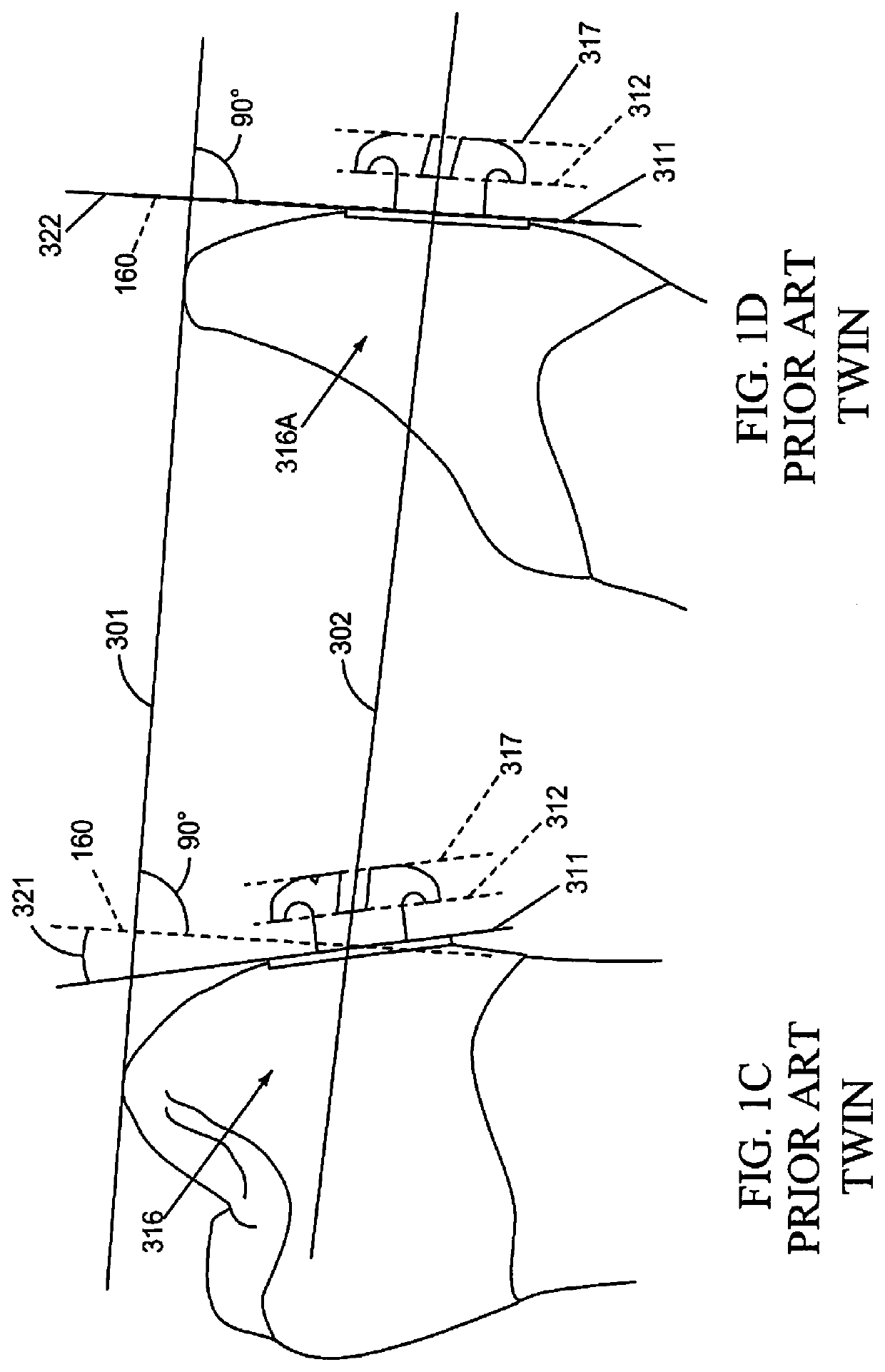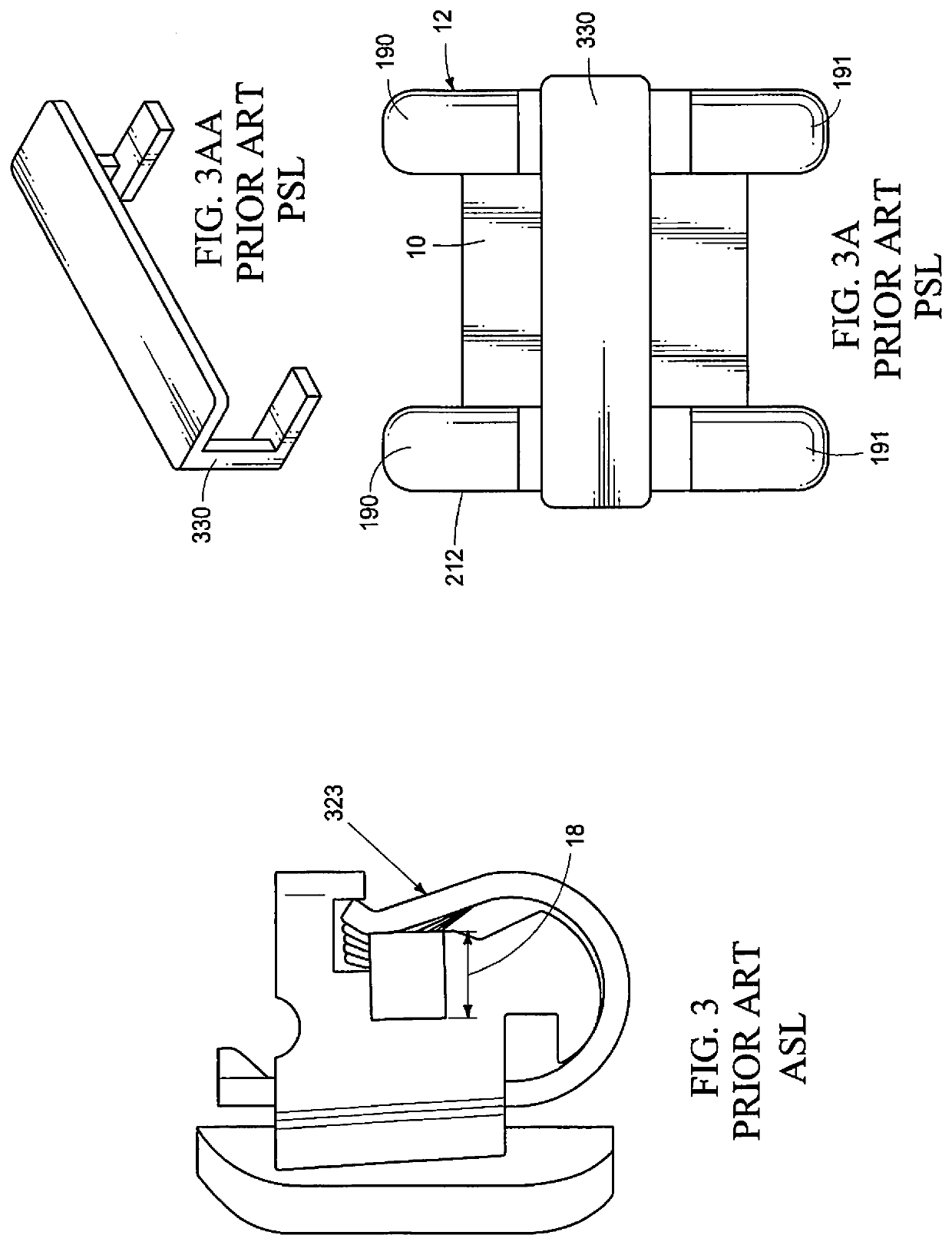Passive Self-Ligation Bracket Assembly
a bracket and self-ligation technology, applied in the field of orthodontics, can solve the problems of long and extended treatment times, difficult to move/translate bracketed teeth along the archwire, and prolong treatment times
- Summary
- Abstract
- Description
- Claims
- Application Information
AI Technical Summary
Benefits of technology
Problems solved by technology
Method used
Image
Examples
Embodiment Construction
[0134]This disclosure of the invention is submitted in furtherance of the Constitutional purposes of the U.S. Patent Laws “to promote the progress of science and useful arts”. (Article 1, Section 8).
[0135]The various surfaces / portions of the passive self-ligation (PSL) brackets, and related components, described herein have surfaces / portion designations may change depending upon the position of PSL bracket on the tooth in the maxillary jaw or mandibular jaw. In an effort to provide clarity, the reference frame herein, shall be relative to the patient's tongue. The following terms shall have the following meanings:
[0136]Upper Dental Arch: plurality of teeth within the maxillary jaw.
[0137]Lower Dental Arch: plurality of teeth within the mandibular jaw.
[0138]Occlusal Plane: biting surfaces of the teeth.
[0139]Facial: proximate to the lips / cheeks and opposite the tongue.
[0140]Lingual: proximate to the tongue.
[0141]Superior: vertically upper surface / portion.
[0142]Inferior: vertically lowe...
PUM
 Login to View More
Login to View More Abstract
Description
Claims
Application Information
 Login to View More
Login to View More - R&D
- Intellectual Property
- Life Sciences
- Materials
- Tech Scout
- Unparalleled Data Quality
- Higher Quality Content
- 60% Fewer Hallucinations
Browse by: Latest US Patents, China's latest patents, Technical Efficacy Thesaurus, Application Domain, Technology Topic, Popular Technical Reports.
© 2025 PatSnap. All rights reserved.Legal|Privacy policy|Modern Slavery Act Transparency Statement|Sitemap|About US| Contact US: help@patsnap.com



